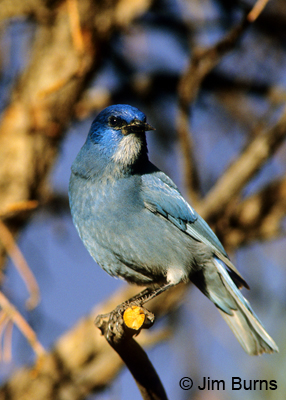
Shame on me! After half an adult lifetime of birding Arizona, only recently have I discovered the avian treasures of Fool Hollow Lake State Park on the western edge of Show Low in Navajo County’s White Mountains. Birders, fearing crowds and noise, often forego birding in our state park system, but there are reasons why these lands have been set aside. Primary among these are scenic beauty and recreational value. Fool Hollow offers both plus a whole suite of birds typically associated with Arizona’s rim country, including one of the White Mountains’ most sought species and another that is a totally cool and unexpected surprise.
Fool Hollow, at 6300 feet in elevation, is an 800 acre park wrapped around a 150 acre fishing lake. It has 31 tent campsites, 92 RV sites with electrical hookup, two miles of hiking trails, and hot showers. It also has an Elk herd, Mule Deer, Beavers and a beaver dam, Gray Foxes, Bobcats, snakes including Western Diamondback, and the occasional transient Black Bear. By the end of my second visit to the park I had seen all but the last three. Oh, and a lot of great birds, best seen by walking the trails around the lake and exploring the meadows and forests off trail.
The best bird of your visit to Fool Hollow will undoubtedly be Pinyon Jay, a hit and miss target in other more remote but more explored parts of the White Mountains. The querulous, ringing call of these flocking corvids is perhaps the signature sound of Arizona’s high country, and I have never missed this species on a morning stop at Fool Hollow. And the unexpected surprise here--a colony of natural cavity nesting Purple Martins, fairly commonly seen in migration in many parts of the state, but not at all easy to find at home during breeding season. Fool Hollow’s martin colony is only the second I’ve seen in Arizona.
In summer there are nesting Osprey in the park, and they patrol the lake for trout and sunfish, oblivious to fishermen in boats and families in canoes. During winter, when the lake is not completely frozen, see Bald Eagles from northern states perched in lakeshore snags watching for the same fish and the occasional unhealthy Canada Goose or duck. The eagles sometimes linger well into spring.
Three species of grebes live on the water, and Great Blue Herons have colonized some of the old Ponderosas in the adjoining forest with their huge, untidy stick nests. There are hummingbirds, Black-chinned and Anna’s in summer, Rufous in migration. Acorn Woodpeckers are ubiquitous and noisy. In summer Grace’s Warblers are common in the pines, Common Yellowthroats in the marshes. Hepatic and Western Tanagers breed, and Black-headed Grosbeak song fills the summer forest.
Late spring/early summer breeding season is best, winter is cold but brings the eagles. Summer weekends can be crowded and noisy around the campgrounds, but the trails and forests are quiet and the park gates open at 5:00am to accommodate the fishermen. Camp or come in early, linger, explore. I mentioned the hot showers, right?